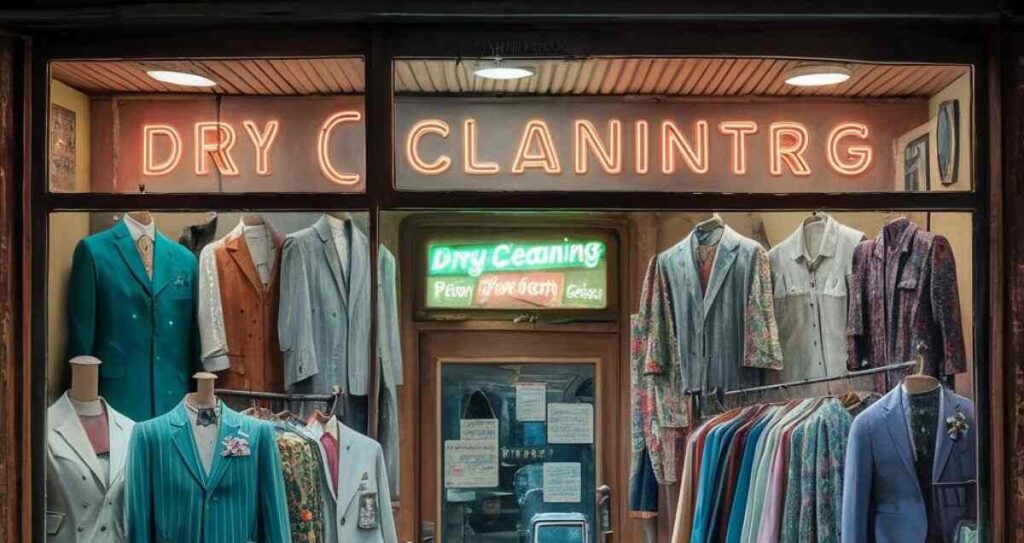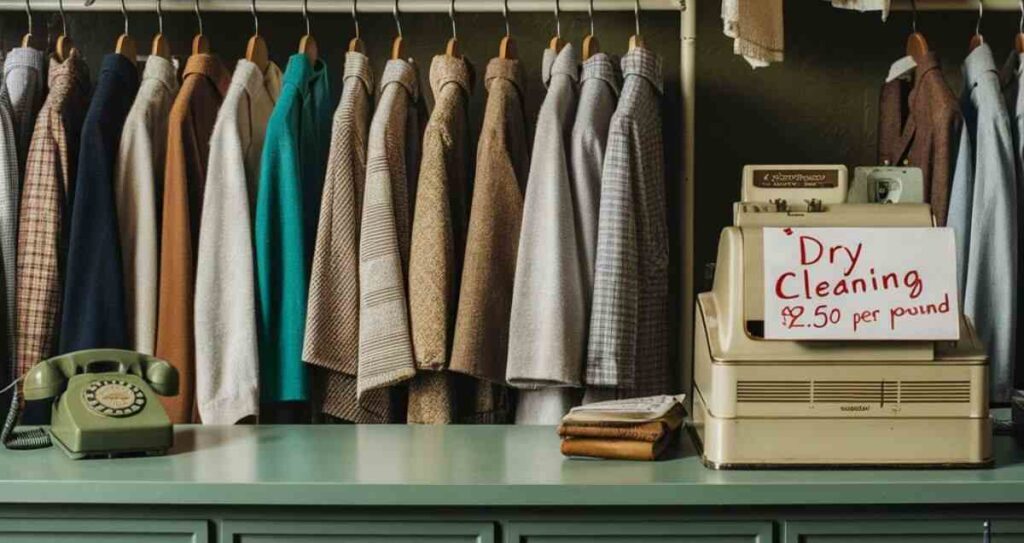Dry Cleaning Vintage Clothing is a specialized cleaning method using solvents instead of water to preserve delicate, historical garments without causing damage.
Have a vintage treasure in your wardrobe? Discover why dry cleaning is the ultimate way to protect and preserve your timeless pieces for generations to come.
Vintage clothing often features fragile fabrics or intricate details that can’t handle standard washing. Dry cleaning ensures these garments remain vibrant and intact.
The Ultimate Guide to Dry Cleaning Vintage Clothing

Vintage clothing offers a unique way to express personal style while embracing sustainable fashion. However, caring for these treasures requires careful attention—especially when it comes to cleaning. Many vintage items have delicate fabrics, intricate details, or dyes that may not withstand standard washing methods. Dry Cleaning Vintage Clothing is a reliable solution to preserve these precious garments, ensuring they last for years.
This guide covers everything you need to know about dry cleaning vintage clothing, including what makes it essential, tips for selecting the right dry cleaner, and DIY care techniques to keep your vintage wardrobe looking stunning.
What Is Dry Cleaning and Why Is It Important for Vintage Clothing?
Dry cleaning is a cleaning method that uses solvents instead of water to remove stains and refresh fabrics. Unlike traditional washing, it minimizes stress on fibers, which is crucial for vintage garments that often feature fragile materials or hand-stitched details.
Key Benefits of Dry Cleaning Vintage Clothing:
- Preserves Fabric Integrity: Protects delicate fabrics like silk, chiffon, or wool that may shrink or warp with water washing.
- Removes Stubborn Stains: Safely eliminates oil-based stains, makeup smudges, or yellowing without damaging the fabric.
- Protects Embellishments: Safeguards intricate beadwork, embroidery, or sequins that may fall apart in a washing machine.
- Increases Longevity: Maintains the garment’s original shape, color, and texture for years to come.
Quote: “Dry cleaning is like giving your vintage treasures a spa treatment—gentle yet effective,” says Amanda L., a textile preservation expert.
How to Choose the Right Dry Cleaner for Vintage Clothing

Not all dry cleaners are created equal, especially when handling vintage clothing. Selecting a professional service experienced in vintage care is crucial to avoid irreversible damage.
Questions to Ask Your Dry Cleaner:
- Do You Specialize in Vintage Garments? Look for expertise in handling delicate, decades-old fabrics.
- What Solvents Do You Use? Opt for eco-friendly and gentle solvents to minimize potential harm.
- Can You Handle Embellished or Hand-Sewn Items? Confirm their ability to clean items with intricate details.
- Do You Test for Colorfastness? Ensure they assess the fabric’s dye stability before cleaning.
| Key Consideration | Why It Matters |
|---|---|
| Experience with Vintage | Ensures knowledge of older fabrics and sewing techniques. |
| Eco-Friendly Methods | Reduces environmental impact while being gentler on garments. |
| Transparency in Process | Helps you understand how they will care for your clothing. |
Preparing Your Vintage Garments for Dry Cleaning
Before heading to the dry cleaner, take a few preparatory steps to ensure the best results.
Steps to Follow:
- Inspect for Damage: Check for loose seams, missing buttons, or tears. Inform your cleaner so they can handle these areas carefully.
- Note Stains: Identify and point out specific stains or spots for targeted cleaning.
- Provide Context: Share the garment’s age, material, and any known history. This information helps cleaners determine the best approach.
- Store Properly: Transport items in breathable garment bags to avoid moisture or dirt accumulation during transit.
DIY Cleaning Tips for Vintage Clothing
While professional dry cleaning is often the safest choice, some vintage pieces can be cleaned at home with the right techniques.
When DIY Cleaning is Appropriate:
- The garment label specifies handwashing or machine washing as safe.
- You’re dealing with durable fabrics like cotton or polyester.
- Stains are minor and don’t require specialized solvents.
DIY Cleaning Steps:
- Spot Test First: Test an inconspicuous area to ensure the fabric won’t discolor or deteriorate.
- Use Gentle Detergent: Opt for a mild soap designed for delicates.
- Hand Wash: Soak the garment in lukewarm water and gently agitate it. Avoid wringing or scrubbing.
- Dry Flat: Lay the item on a clean towel to air dry. Never use a dryer, as heat can cause shrinkage or damage.
Pro Tip: Add a splash of white vinegar to the rinse water to neutralize odors and brighten whites without harsh chemicals.
Common Issues When Dry Cleaning Vintage Clothing

Even with careful dry cleaning, some challenges can arise. Understanding these issues helps you make informed decisions about garment care.
Common Problems and Solutions:
| Issue | Explanation | Solution |
|---|---|---|
| Color Fading | Harsh solvents may strip dyes. | Request colorfast testing and opt for gentler solvents. |
| Fabric Weakening | Over-cleaning can weaken fibers. | Clean only when necessary to extend garment life. |
| Embellishment Damage | Beads or sequins may loosen or melt during cleaning. | Specify fragile areas to your dry cleaner in advance. |
| Lingering Odors | Improper ventilation during cleaning may leave a chemical smell. | Air out garments before storing them. |
Case Study: Restoring a Vintage Wedding Dress
Scenario: Claire inherited her grandmother’s 1950s lace wedding dress, which had yellowed with age and suffered from minor tears.
Steps Taken:
- Claire chose a specialized dry cleaner experienced in vintage wedding gowns.
- The cleaner performed spot treatments for stains and reinforced weak seams.
- After cleaning, Claire stored the dress in an acid-free garment box with tissue paper to prevent further aging.
Outcome: The dress looked pristine, and Claire wore it to her own wedding, continuing a cherished family tradition.
How to Store Vintage Clothing After Cleaning
Proper storage ensures your vintage pieces remain in excellent condition long after cleaning.
Storage Tips:
- Use Acid-Free Materials: Store items in acid-free garment bags or boxes to prevent discoloration.
- Avoid Plastic: Plastic traps moisture, leading to mildew or fabric degradation.
- Control Humidity: Keep storage areas cool, dry, and well-ventilated.
- Rotate Periodically: Occasionally air out garments to prevent creasing and moth damage.
Conclusion
Caring for vintage clothing requires patience, knowledge, and the right resources. Whether you choose professional dry cleaning or careful DIY methods, the goal remains the same: preserving history while celebrating timeless fashion.
Dry Cleaning Vintage Clothing not only maintains its beauty but also honors the craftsmanship of bygone eras. So, the next time you find a vintage treasure, you’ll know exactly how to keep it looking its best.
Vintage fashion is a bridge between history and individuality. Proper care ensures these stories endure, notes Sarah Turner, a vintage boutique owner.
David Mark is a fashion aficionado and writer for Fashion Burst, where he delivers insightful content on the latest trends and style tips. With a keen eye for detail and a passion for all things fashion, David provides readers with expert advice and trend-setting ideas. His engaging posts help you stay ahead of the curve and refine your personal style with confidence and flair.
